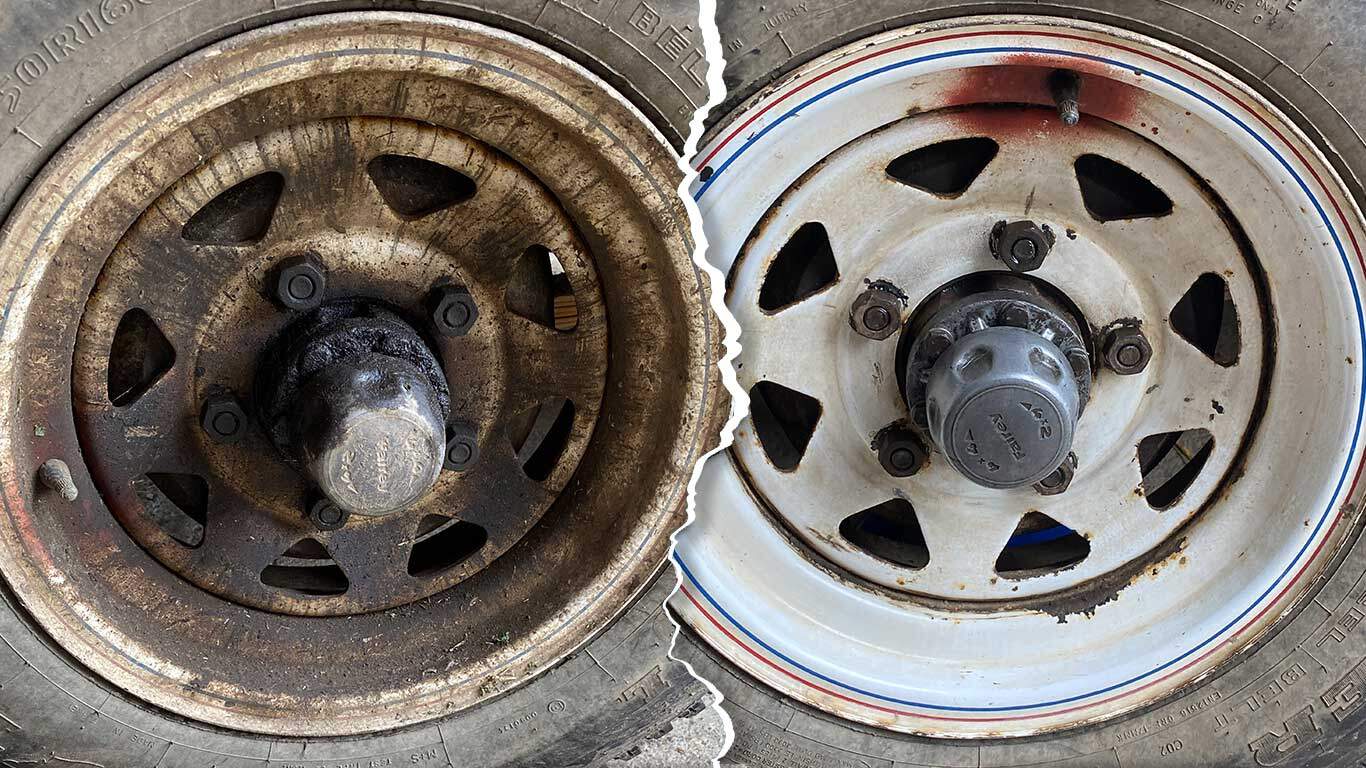“Look at that front axle,” he said, pointing to the beige Series III Land Rover. The front right wheel and Fairey Free Wheeling Hub (FWH) were sporting a thick, star-shaped, coating of oil, dust and grime. “I keep driving it, even though I know I shouldn’t. Can you have a look at it and sort out the problem before something expensive breaks?”
Well, why not? It’s a fairly straightforward service procedure, albeit with the addition of the Fairey hubs. Why one hub was so much more incontinent than the other wasn’t immediately obvious.
Before servicing the hubs, drain the axle of oil and check for any swarf. If there are any traces of metal, you should inspect the differential and thoroughly clean the housing. Also, ensure the axle breather is clear and functional—a blocked breather can cause the hubs to leak due to built-up pressure.
After removing the wheel, the worst of the coagulated oil mix, that had layered up to nearly ten millimetres in thickness between the hub bolts, was cleaned away. Wire brush, a wide flat screwdriver to pry off the chunks, plenty of brake cleaner, some rags, and a tray to catch the drips and debris.
Scrubbing, spraying, wiping down. Then, the problem with the really leaky hub quickly became apparent: copper washers beneath the hub bolts, now shining brightly, had compressed rendering what should have been a tightly sealed joint between the hub and the driving member a leaky slit. The bolts themselves weren’t even finger-tight, they turned quite freely.
With the workspace cleaned up, servicing can begin. As with all classic car repairs, the 3-Ps apply: premeditation, patience, and perseverance.
SERVICE PARTS AND TOOLS
- Fairey Free Wheeling Hub Service Kit RTC7136-SERVICE available from L.R Optional Equipment
- ROCOL MTS1000 grease (alternative MOTUL IRIX L 150-2 MO)
- Torque wrench
- Front Hub Castle Nut Spanner, Land Rover part no. RO1010 or HNJRO1010 from HNJ Engineering Ltd.
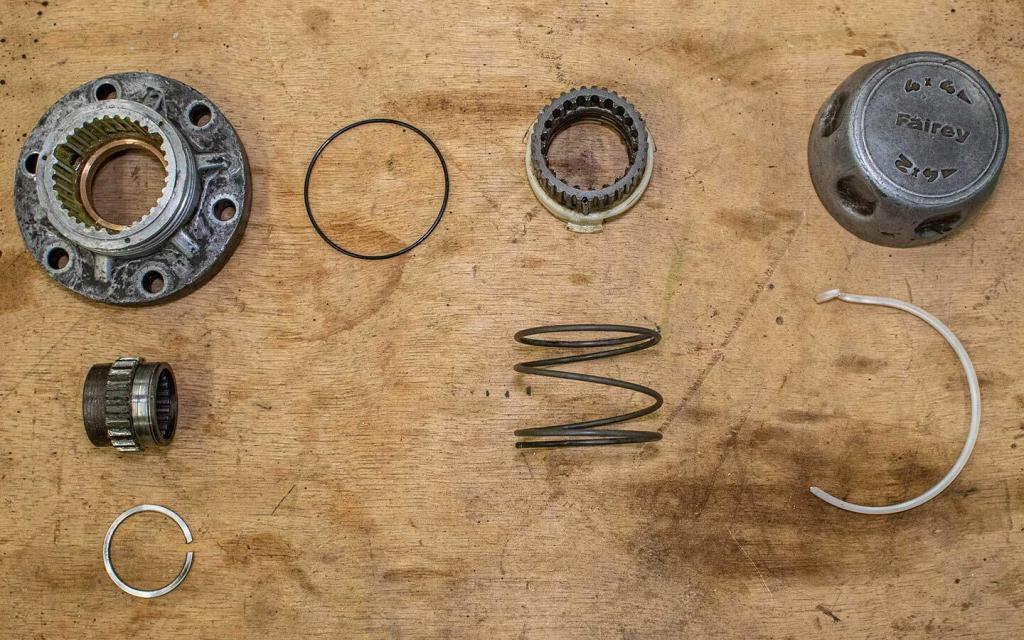
1. DISASSEMBLY
- Remove the single screw near the edge of the outer cap of the Fairey fwh. If the hub is working correctly, the outer cap can be rotated to engage and disengage 4WD.
- With the screw removed, wipe away any grime or oil and, using a small tool (I use the smallest hex key in a set), hook out the nylon cup which is held in place by the screw. (If the FWH has been in place for several years, it might not be obvious that there is a plastic cup in the hole—over time, everything tends to blend together.)
- With the cup raised, you will then find it is the head of a long strip of white nylon resembling a cable tie but without the teeth—this is the retaining strip that holds everything together. Get a firm grip of the cup and remove the strip by pulling from left to right. There is a fair chance it won’t just pull out in one smooth action. Don’t use excessive force. Slowly twist the FWH cap to and fro whilst pulling the strip at the same time. It will come out. If the strip snaps, you’re really going to have your work cut out for you disassembling the unit. As the strip comes out completely, the cap, which is mildly spring loaded, should pop off. Inside, you will find a large spring surrounding an actuator assembly made up of a toothed gear, three roll pins, a spring, and a plastic carrier. Put these to one side for cleaning.
- Tap out the roll pin securing the castle nut on the splined half shaft protruding from the hub. As long as 4WD hasn’t been selected on the transfer case, the shaft will turn to simplify removing the pin vertically. If you don’t have a drift, you can use a suitably sized hex key and a light hammer to tap it out. The castle nut should be loosened using the original service tool part no. RO1010 (or the HNJ Engineering replacement). When you remove the nut, a retaining ring sitting on the splined shaft may come out with it. If not, it will come out with the driving member.
- Undo the six bolts holding the driving member in place. There should be star washers beneath the bolt heads. You may need to carefully tap a flat head screwdriver into the flange joint to separate the parts. Put the driving member to one side for cleaning.
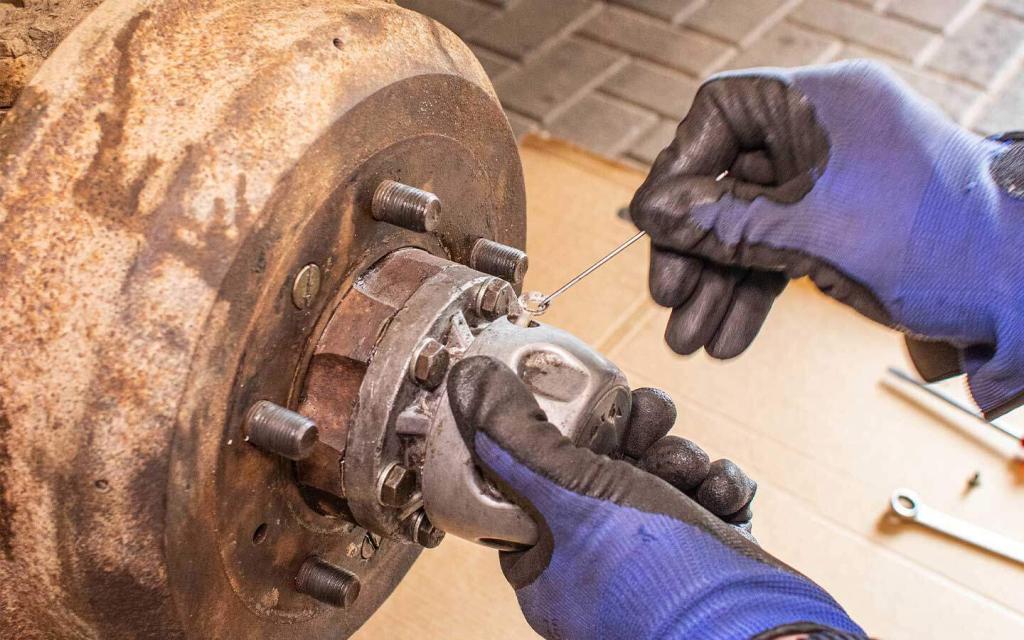
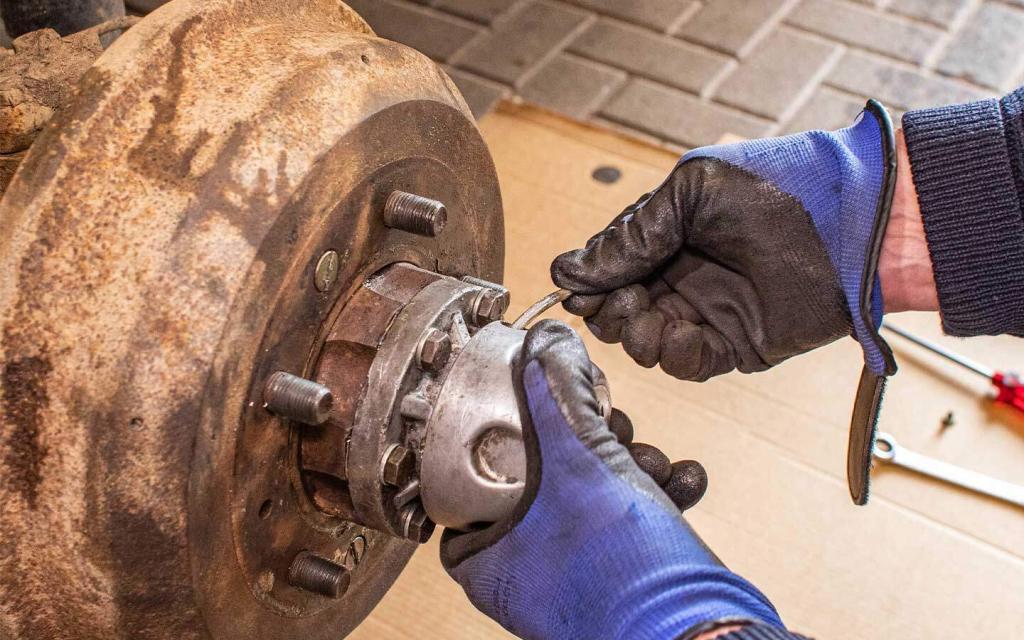
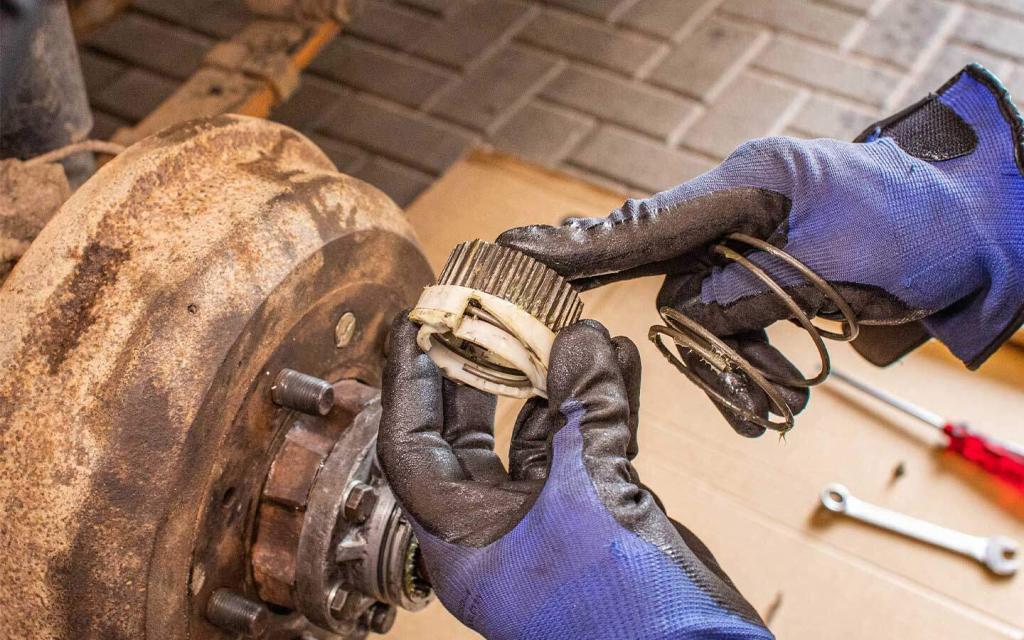
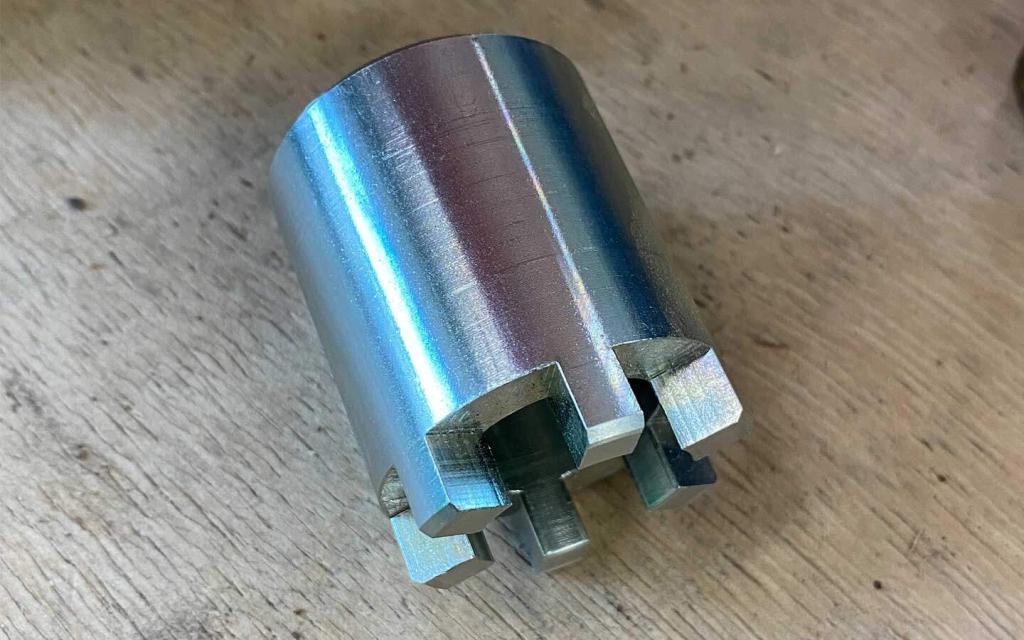
2. CLEANING AND CHECKING ALL COMPONENTS AND SURFACES
- Clean and degrease all components. Use a brush to clean out small spaces.
- Looking at the driving member from the rear, you will see a snap ring, sitting on a bronze bearing, that retains the splined inner hub. Remove the snap ring and clean all parts.
- Gently use a sharp knife blade to remove any stubborn gasket material from the flange surfaces.
- Remove the large, thin black o-ring from the front side of the driving member. Discard.
- Check for any obvious damage on all components and replace where necessary. Splines should all be intact. All surfaces should be smooth.
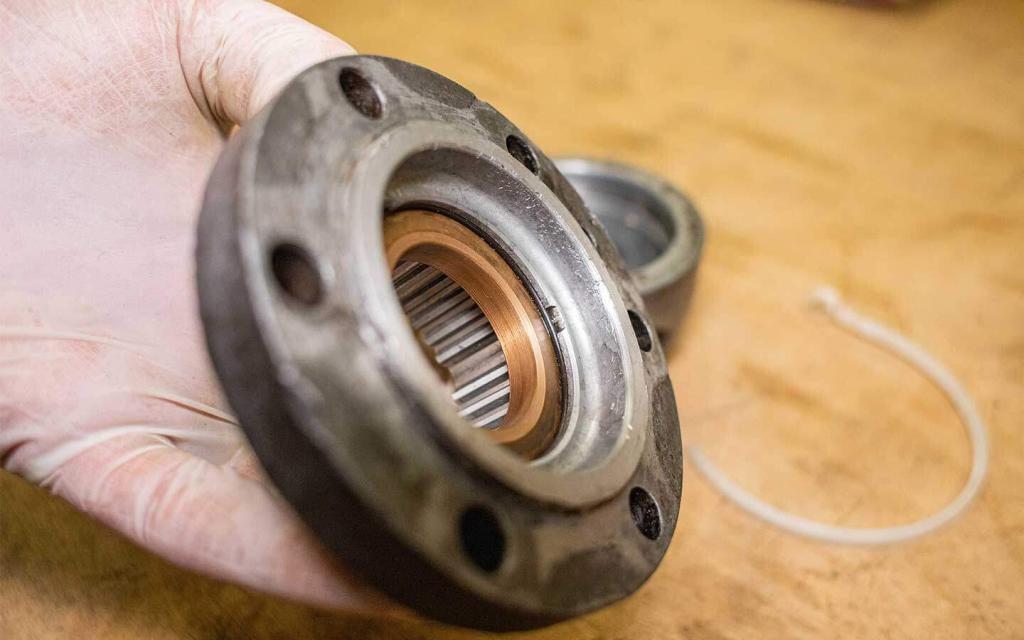
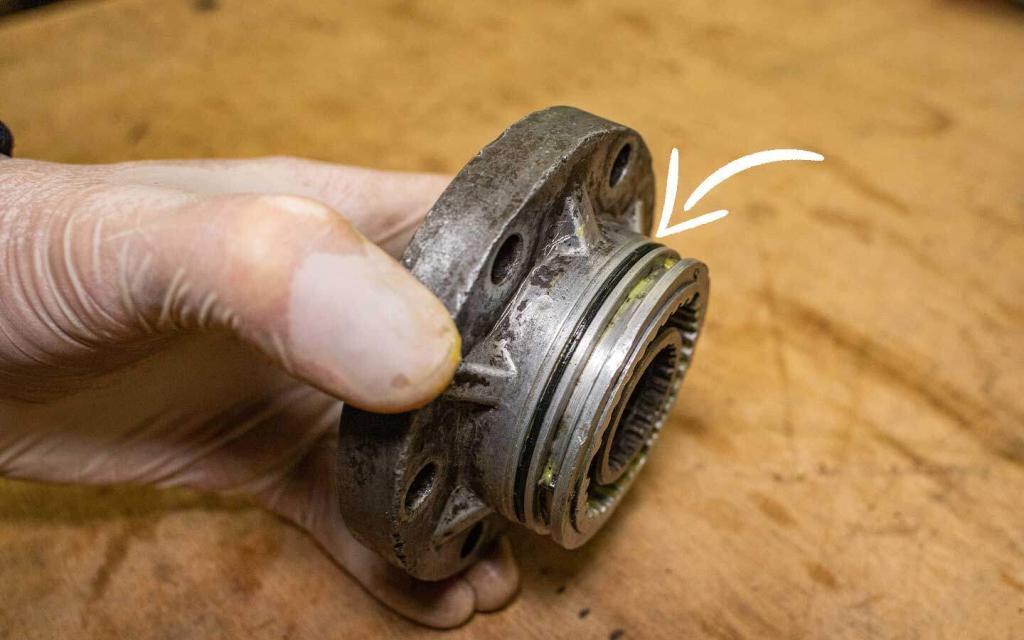
3. REASSEMBLY USING ROCOL MTS1000 GREASE (OR AN ALTERNATIVE)
- Driving member: Coat the inner surface of the bronze ring and the inner splines with grease. Coat the inner and outer surface and splines of the inner hub with grease, insert into the bronze bearing and secure with the snap ring. The inner hub should spin freely inside the bronze bearing.
- Cap: Coat the three cams inside the cap with grease.
- Actuator assembly: Coat the internal and external splines with grease as well as the surfaces of the plastic carrier.
- Place the plastic end of the actuator assembly on the three cams of the cap, and rotate counter clockwise until it is fully recessed inside the cap. Insert the coil spring into the cap so that it surrounds the actuator assembly.
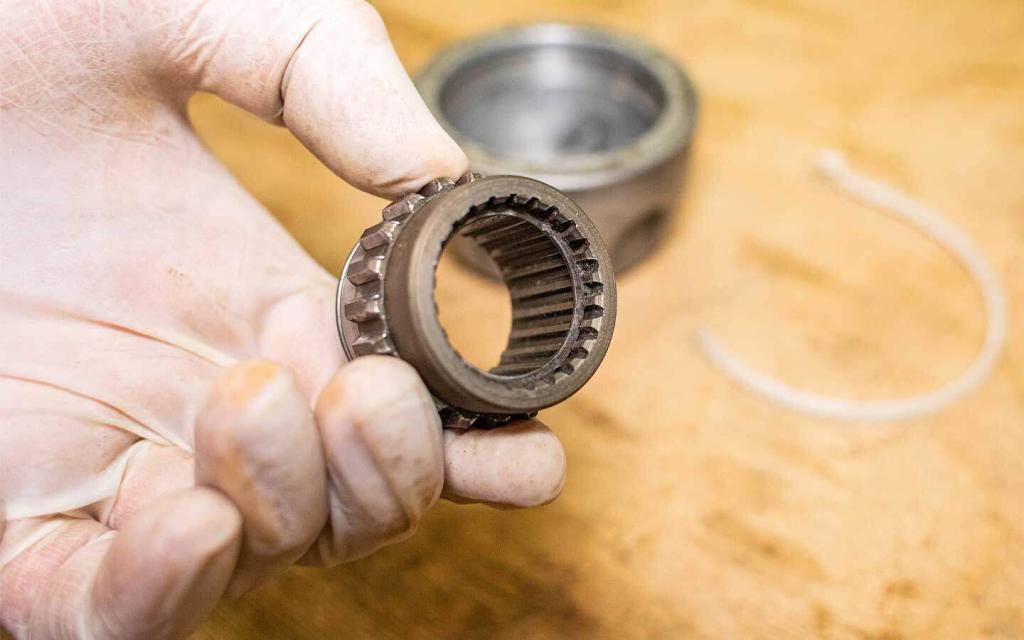
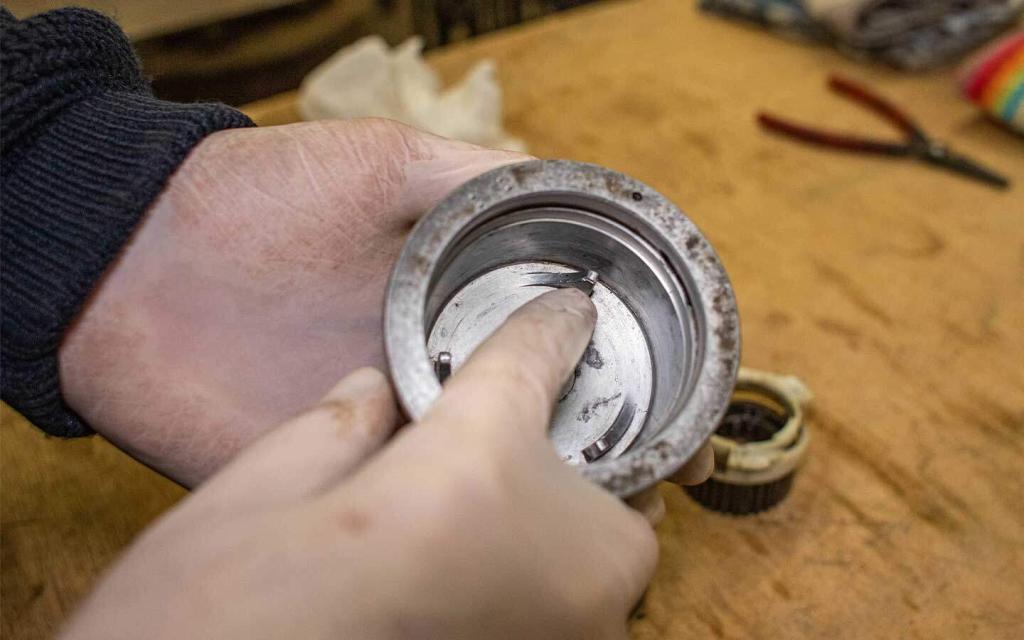
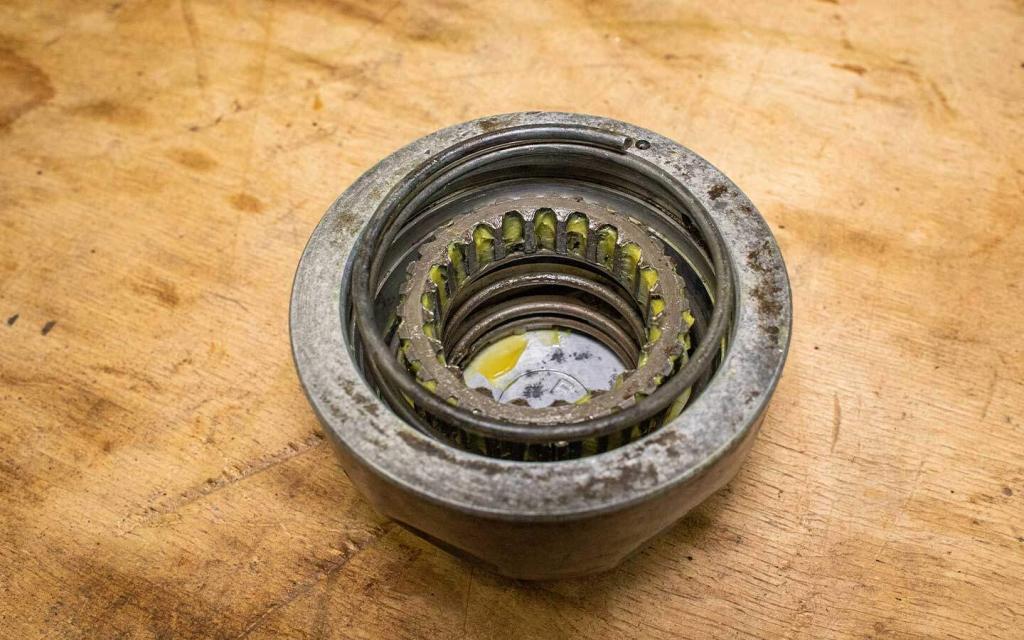
4. MOUNTING DRIVE MEMBER TO HUB
- Apply a thin coating of gasket sealer to both flange surfaces. This helps to compensate for any surface irregularities to provide an improved seal and keeps the paper gasket in place during assembly.
- Position the paper gasket.
- Insert bolts with star washers, and tighten using a torque wrench set to 28 ft/lbs (37 Nm).
- Insert the retaining ring onto the half shaft and into the inner hub, and secure with the castle nut using a torque wrench set to 15 ft/lbs (20 Nm).
- Tap through the roll pin to lock the castle nut.
- Using a thin layer of general purpose grease, insert the black o-ring into the groove on the front of the flange.
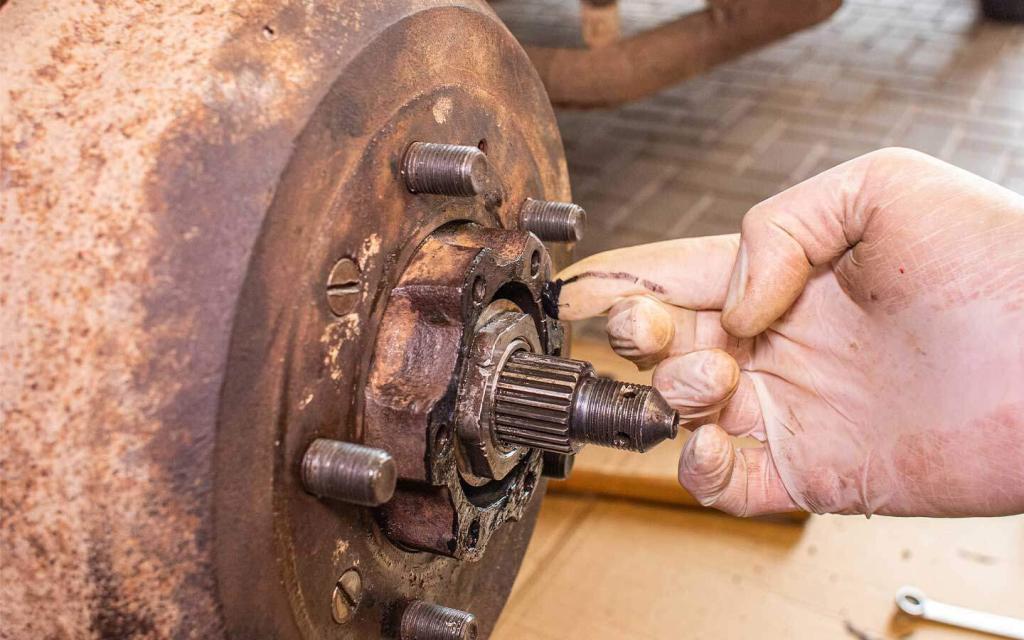
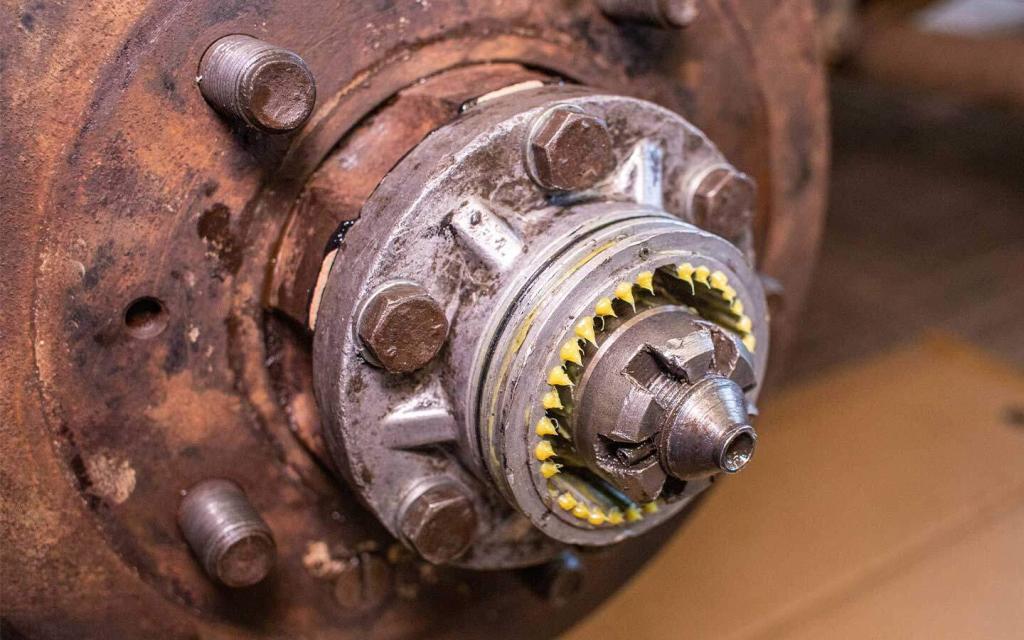
5. MOUNTING THE OUTER CAP
- Coat the white nylon retaining strip with a thin layer of general purpose grease.
- Align the three roll pins of the inner assembly with the corresponding slots in the driving member.
- Press the cap onto the flange to depress the spring.
- Insert and feed the white retaining strip into the slot in the cap until the plastic cup sits in the screw hole. Do not use excessive force. Rotate the cap to and fro to help insertion.
- Insert and tighten the screw.
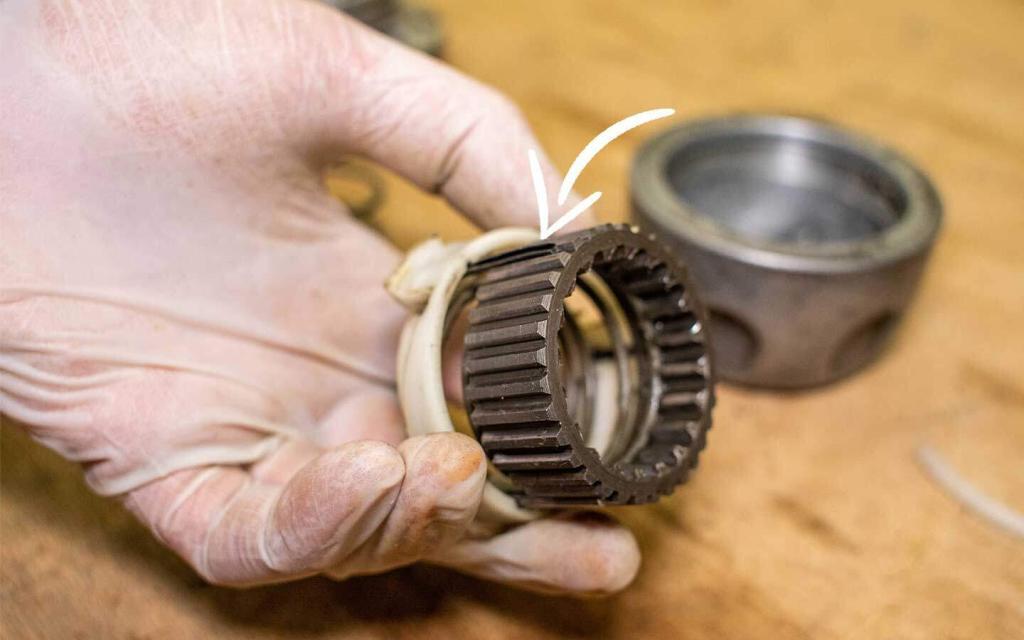
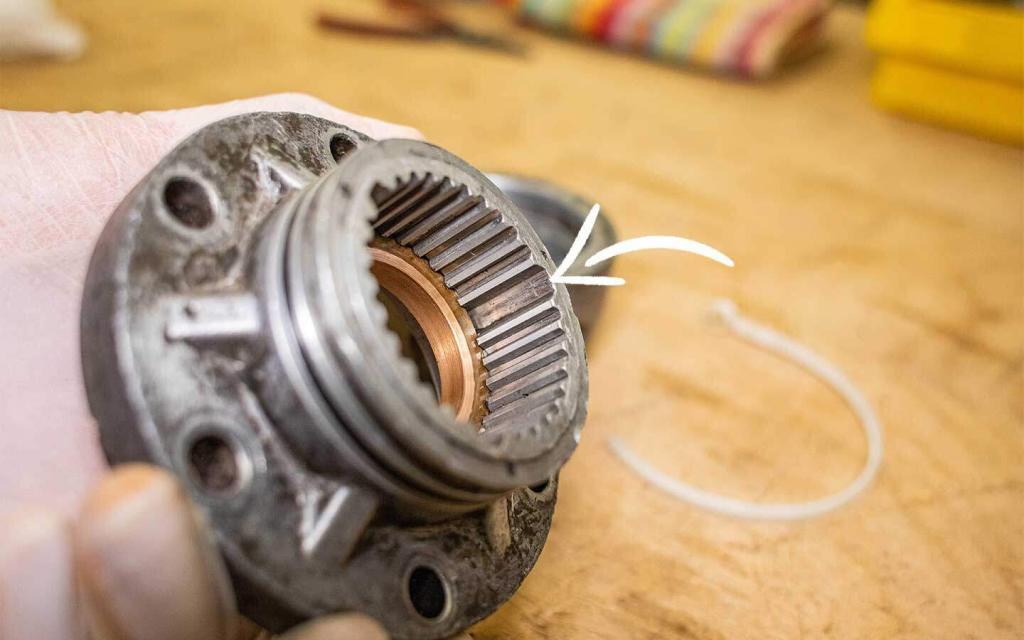
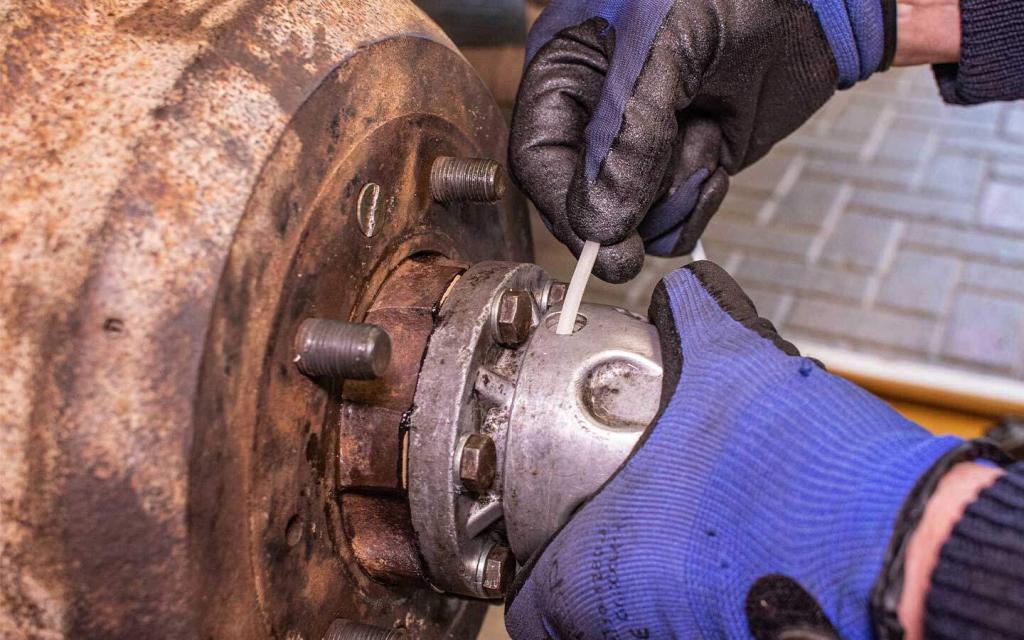
After reassembly, check for smooth operation and engagement of the FWH.
With both hubs reassembled, refill the axle with oil to the filler hole.

